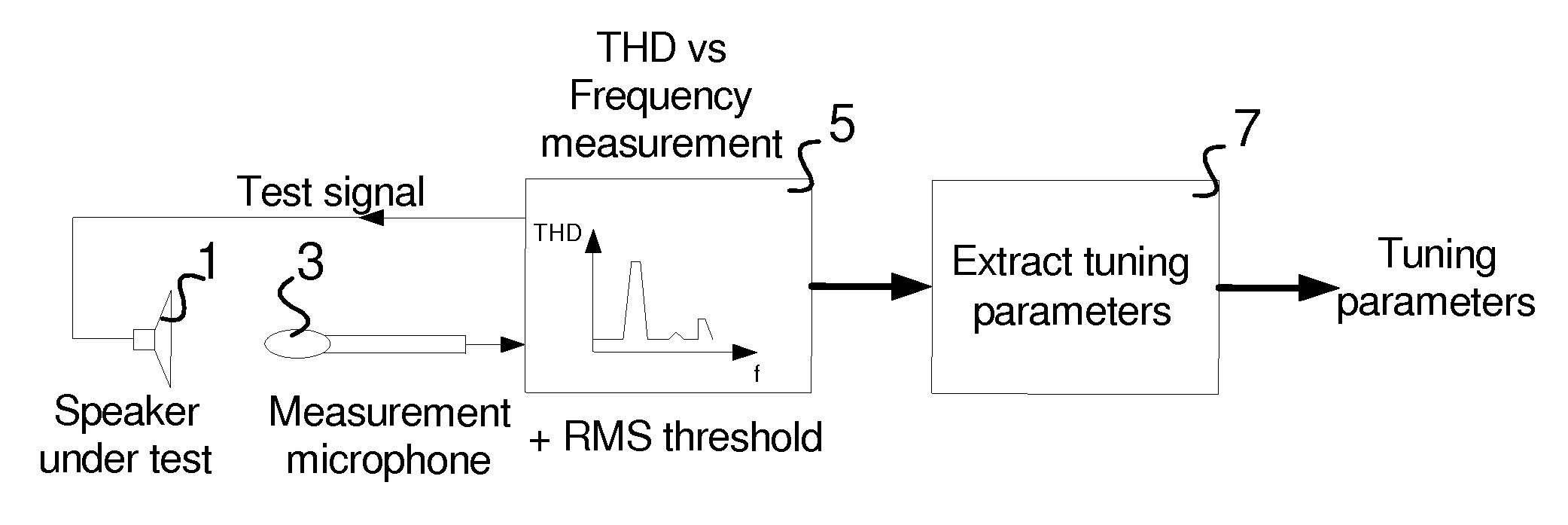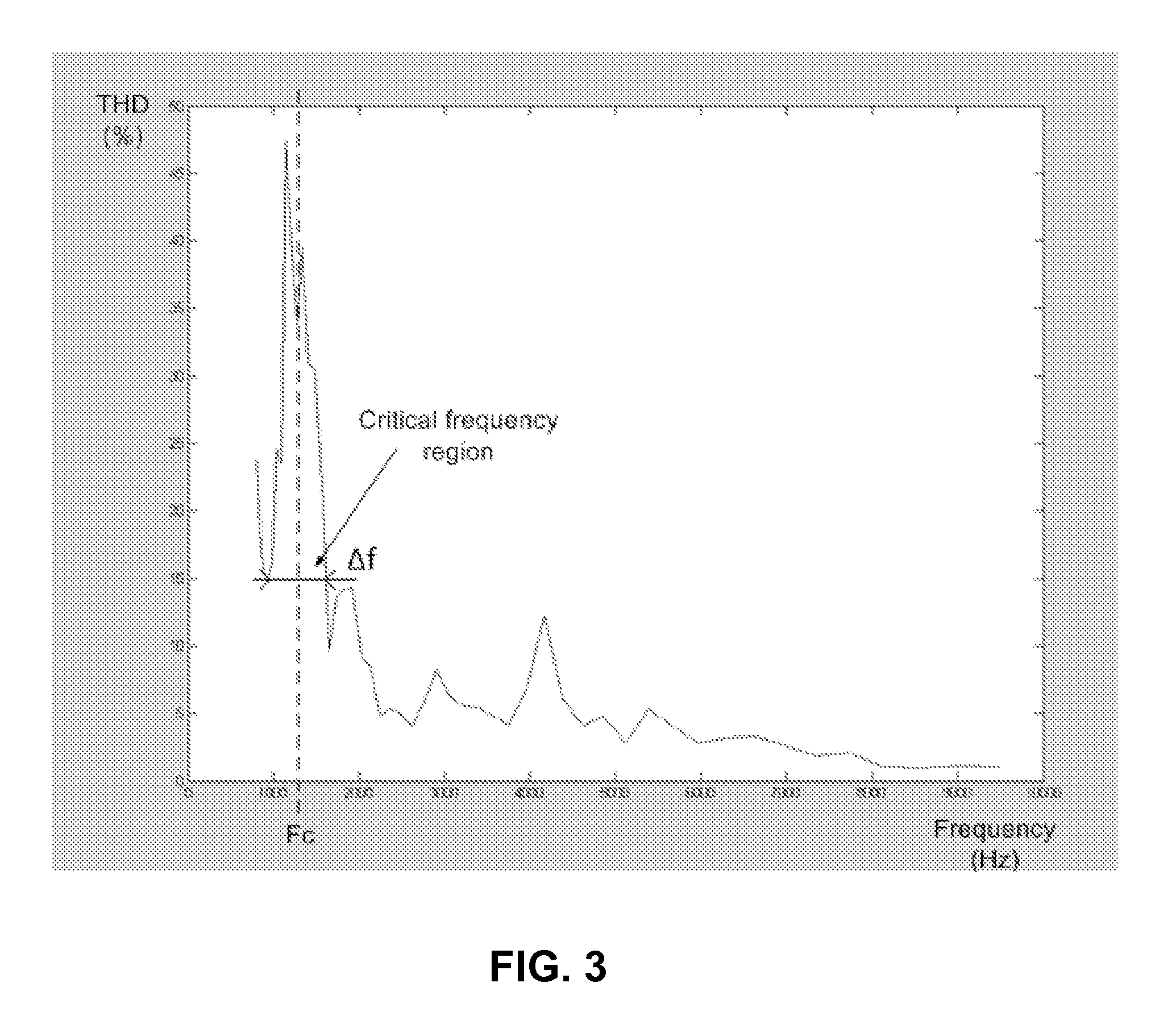Method and system for controlling distortion in a critical frequency band of an audio signal
a critical frequency band and audio signal technology, applied in the direction of transducer details, electrical transducers, electrical apparatus, etc., can solve the problems of limiting the maximum volume, requiring a high level of computational complexity, and the output of any speaker is subject to distortion, so as to reduce the distortion of the speaker's output in response to the filtered signal
- Summary
- Abstract
- Description
- Claims
- Application Information
AI Technical Summary
Benefits of technology
Problems solved by technology
Method used
Image
Examples
Embodiment Construction
[0062]Many embodiments of the present invention are technologically possible. It will be apparent to those of ordinary skill in the art from the present disclosure how to implement them. Embodiments of the inventive system and method will be described with reference to FIGS. 1-8.
[0063]FIG. 1 is a block diagram of an embodiment of a system for determining tuning parameters in accordance with the invention. The FIG. 1 system includes digital audio processing system 5, and speaker 1 and microphone 3 coupled to system 5. System 5 is coupled and configured to generate an audio test signal having a desired frequency-amplitude spectrum, and to assert the test signal as an input signal to speaker 1. Microphone 3 is coupled and configured to detect the sound emitted by (the output of) speaker 1 in response to each test signal, and to assert a microphone output signal (indicative of speaker 1's output) to system 5.
[0064]System 5 is operable to assert a sequence of test signals (having differe...
PUM
 Login to View More
Login to View More Abstract
Description
Claims
Application Information
 Login to View More
Login to View More - R&D
- Intellectual Property
- Life Sciences
- Materials
- Tech Scout
- Unparalleled Data Quality
- Higher Quality Content
- 60% Fewer Hallucinations
Browse by: Latest US Patents, China's latest patents, Technical Efficacy Thesaurus, Application Domain, Technology Topic, Popular Technical Reports.
© 2025 PatSnap. All rights reserved.Legal|Privacy policy|Modern Slavery Act Transparency Statement|Sitemap|About US| Contact US: help@patsnap.com



